Last Updated on: 5th August 2024, 01:08 pm
The are a few different ways to enjoy a day trip to Progreso from Mérida. One option is to relax on the beach, explore town and grab some food before heading back home. But if you’re feeling a bit more adventurous, Progreso’s surroundings are home to four unique sites, all of which can be visited in several hours.
The stops on the popular route include an ecological park, salt flats, Mayan ruins and a chance to see some flamingos. Keep reading to learn more about arranging the tour, while you can find info about reaching Progreso from Mérida at the very end of the article.
Visiting the Four Sites
Upon arrival in Progreso, I quickly realized that I’d overestimated the popularity of the tour to the area’s four main sites. Based on my research, I was under the impression that numerous tourism offices in town organized group excursions departing regularly.
But upon walking around the entire town (it’s not very big), I only encountered a single agency which happened to be the one that approached me at the bus station. And to my surprise, these were not group tours, but private.
The initial price they quoted me was $850 MXN (a little over $40 USD) which included a private driver and all entry tickets. This was higher than I’d wanted (or expected) to pay, but I managed to bring it down to $500 MXN, provided I pay for all the entry fees myself.
The total cost of the entry fees for the four attractions added up to around $200, meaning I paid about $700 MXN for the full tour. Looking back, I feel that I got my money’s worth.
If budget is not a huge concern for you, this tour can also be booked online in advance.
El Corchito Ecological Reserve
Located on a small mangrove island across the lagoon from central Progreso, the El Corchito Ecological Reserve can only be accessed via a small boat.
But first, you’ll encounter a parking area and a ticket booth. Open from 9:00–16:00, the Ecological Reserve costs $90 MXN at the time of writing.
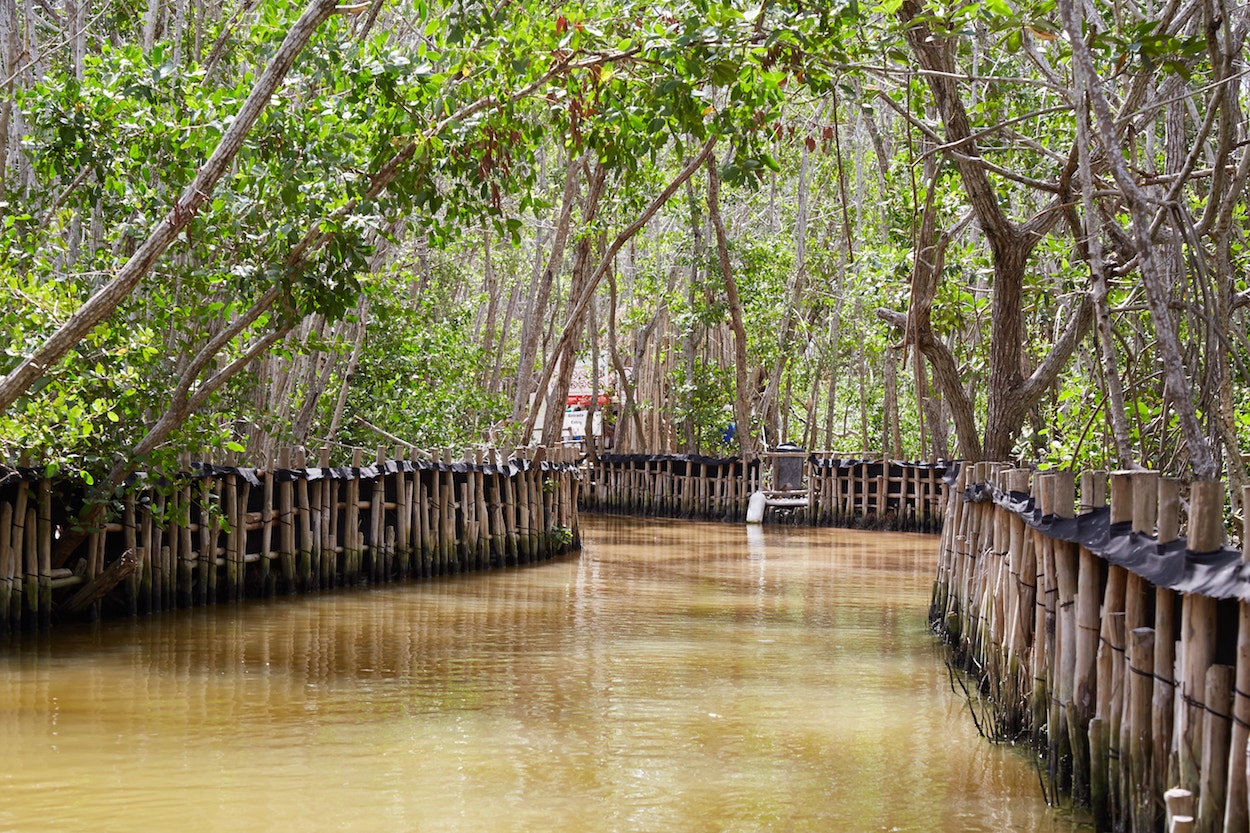
As you’ll quickly discover, the reserve is inhabited by countless coatis, or ‘Mexican raccoons.’ These cute and curious creatures, immediately recognizable by their long puffy tails, can be found throughout Mexico and South America.
If you have any sort of luggage, you’ll be forced to pay a small fee to leave it in a locker by the entrance. This surely has to do with the mischievous coatis getting into people’s snacks.
Despite not having any food on me, a hungry coati suddenly appeared right behind me upon unzipping my bag!

Another forbidden item is sunscreen. El Corchito is not just a place to see wildlife, but to swim in a natural cenote. And the chemicals in many commercial sunscreens can be damaging to local flora and fauna.
Even before boarding the boat, I was asked to rinse the sunscreen I’d applied that morning off my face.


The reserve consists of three cenotes, or natural sinkholes that expose the fresh groundwater.
While cenotes typically appear as giant holes in the ground, or are sometimes located within enclosed caves, the ones here are at ground level. As such, they appear more like small lakes.
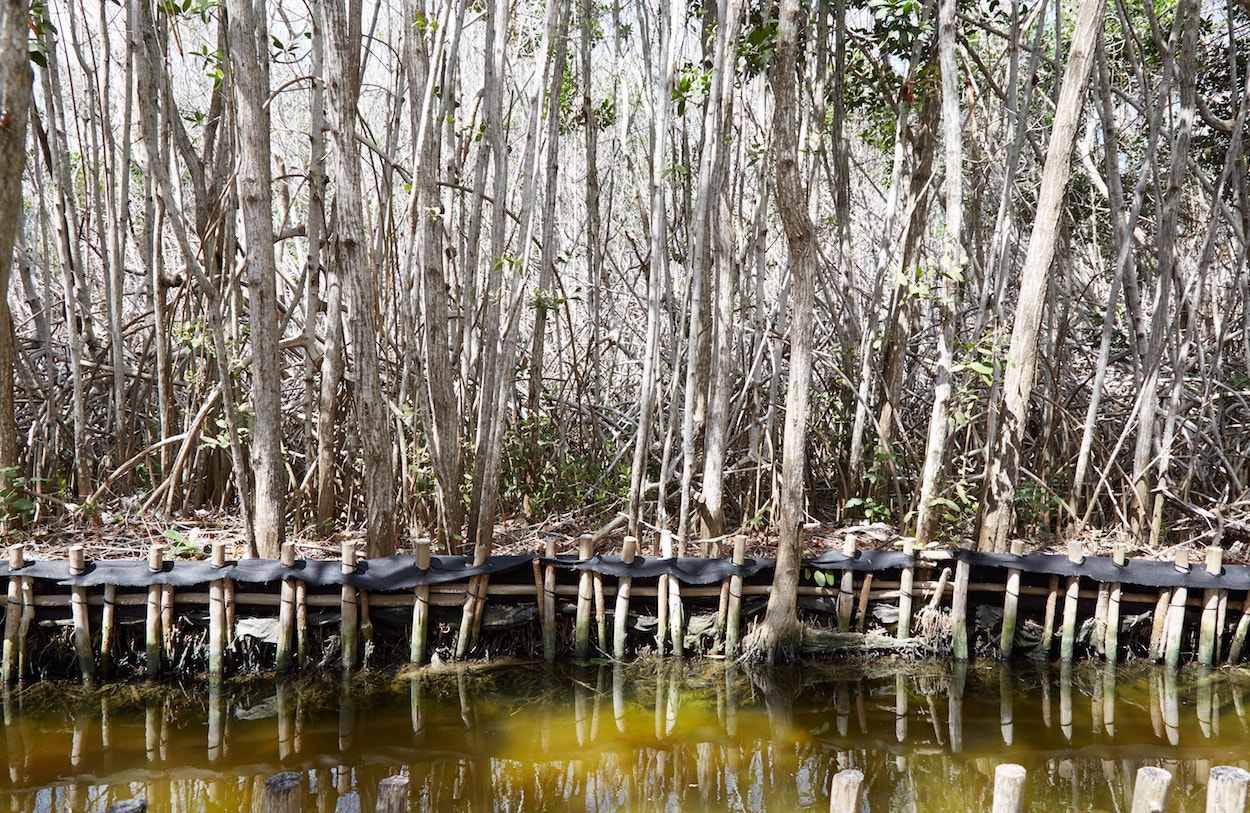
The largest and deepest of them is called Cenote Pájaro. It’s also the furthest away from the entrance. And on the peaceful walk there, you may run into various other species (including birds, reptiles and other small mammals) that inhabit the reserve.
While I took a dip for several minutes, I had to be mindful of the time, as there was still a lot more in store for me on this day trip to Progreso.

The Pink Salt Flats (Salinas Rosas)
Back on the main highway, it was about a thirty-minute drive east to our next destination, the Pink Salt Flats.
The visit basically consists of just walking around and admiring the pink-hued water, which is indeed quite mesmerizing. Around the site, you’ll find several different rectangular pools connected by various pathways.
The color is supposedly caused by particular microbes living in salty water that appear pink when reflected by sunlight.
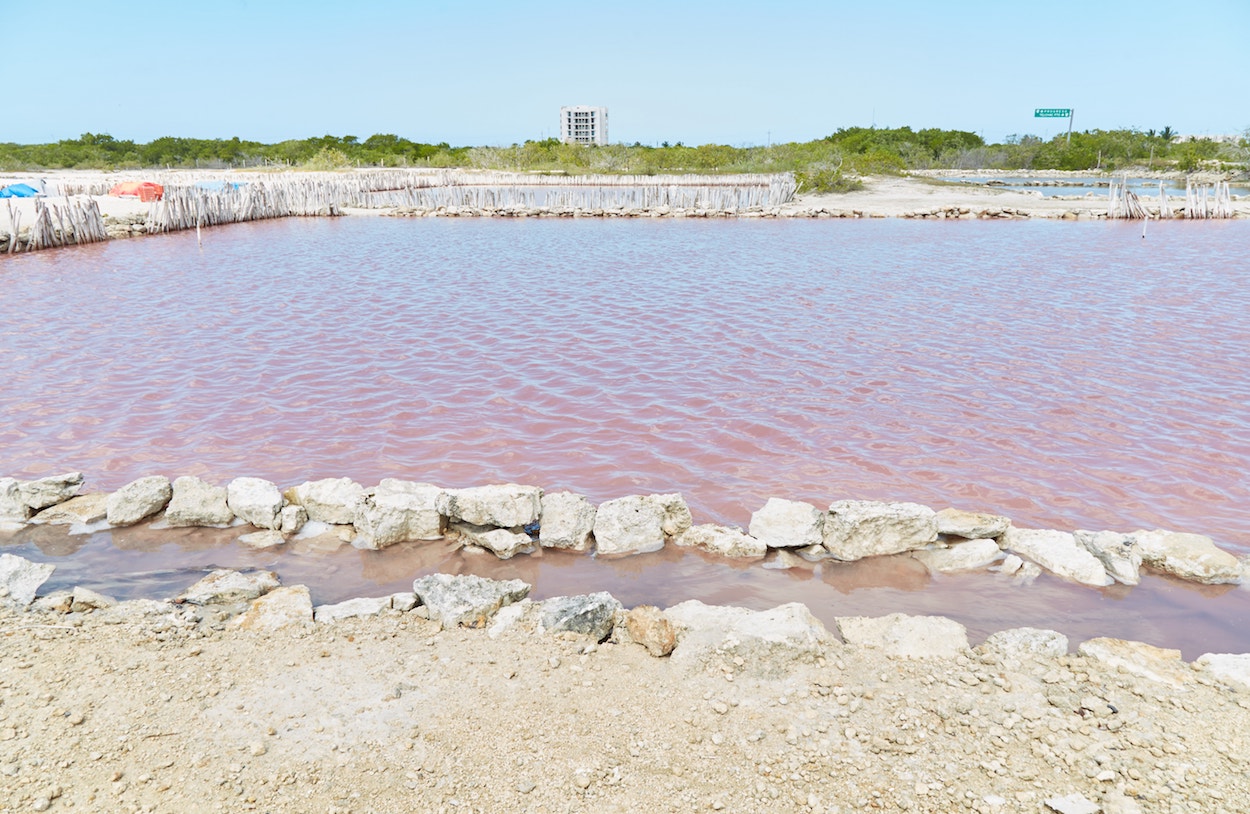
This is a much smaller version of Las Coloradas on the coast north of Valladolid, which I somehow missed in my research during my stay there.
In any case, one of the appeals of that destination used to be that the pink lake was swimmable, though this is apparently no longer true.

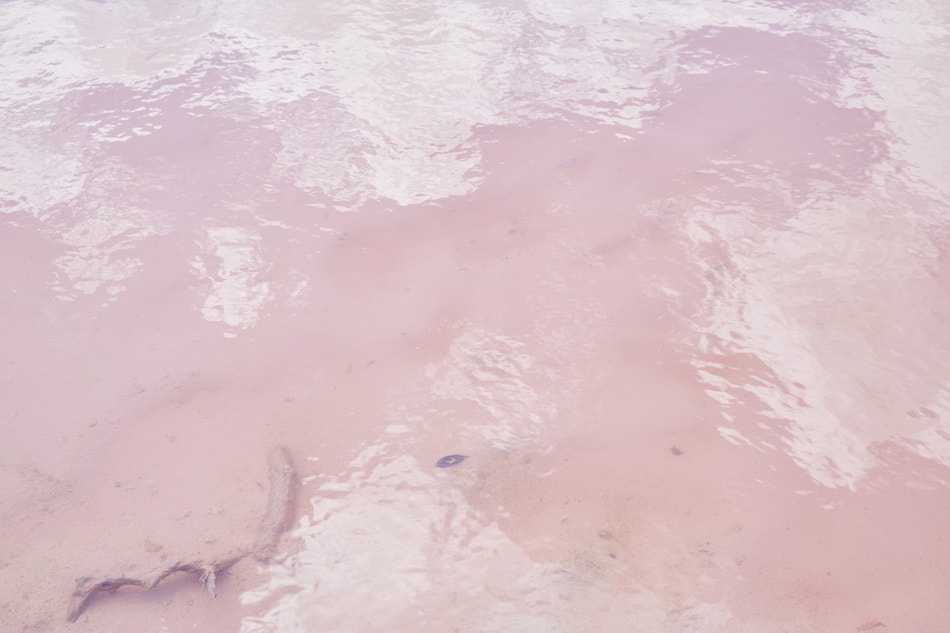
The locals are indeed harvesting salt here, and if you want you can purchase a bag. But during my visit, the place seemed to be largely deserted, and it was only upon leaving that a person sitting by the entrance asked for the entrance fee of 20 pesos.
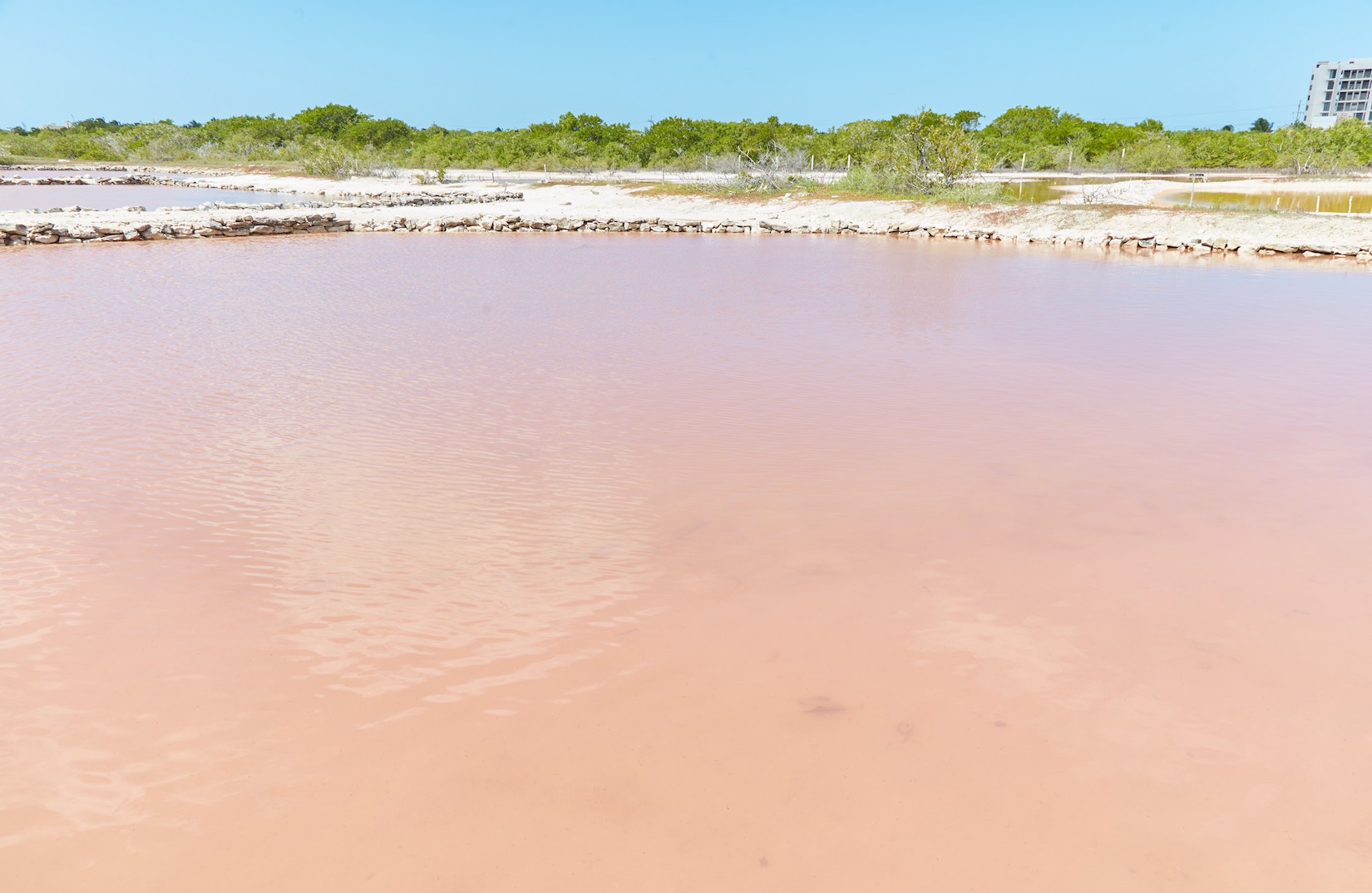
Depending on the season and time of day you visit, you may or may not find the water to be as colorful as some of the pictures you see online.
Visiting in the dry season, I found the water to be pretty pink, but the color is said to be a lot less prominent during the rainy season.

The Xcambó Ruins
Situated at the edge of the Laguna Rosada, Xcambó mainly functioned as a commercial port. In fact, the salt flats mentioned above were exploited by the local Mayans who traded it with the rest of the Mayan world.
Xcambó was established in the Early Classic Period (250-600 AD), and in its prime was likely under the dominion of Izamal. The site, however, would eventually be abandoned during the Late Classic period (600-900 AD).

Arriving at the site, which costs $85 MXN to enter, the first structure you’ll notice might surprise you: a church. But it wasn’t built during Spanish colonial times. Rather, locals constructed it as recently as the 20th century.
According to legend, a virgin lives at Xcambó but can only be seen by those who have faith. This seems to be a unique fusion of Catholicism and ancient Mayan beliefs, and a religious festival still takes place each year in May to honor the Virgin of Xcambó.
Notably, when looking at older pictures, the entire church was once covered in a huge Mayan-style thatched roof! As you can tell, it was completely absent at the time of my visit.

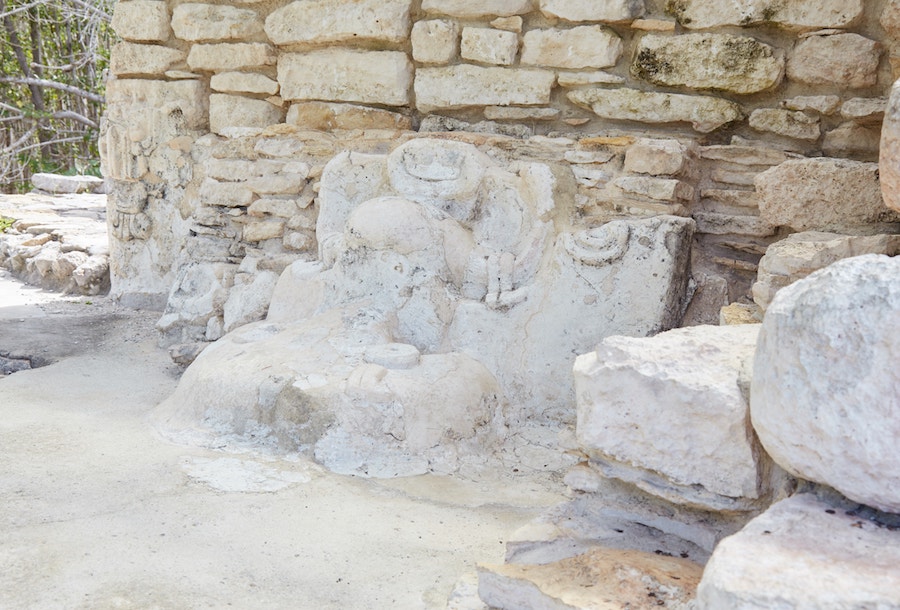

Moving along, you’ll soon find yourself in the main plaza. And all of the structures here can be climbed. The earlier structures of Xcambó were built in the Petén style of Guatemala, while later additions are more reminiscent of the Puuc style made famous by cities like Uxmal and Kabah.
Over to your right, you’ll find the ‘Pyramid of the Masks,’ named after the two stucco masks found along one of its upper tiers. Interestingly, one represents Venus and the other the Sun, based on the idea that it’s Venus which leads the Sun out of the underworld each morning.
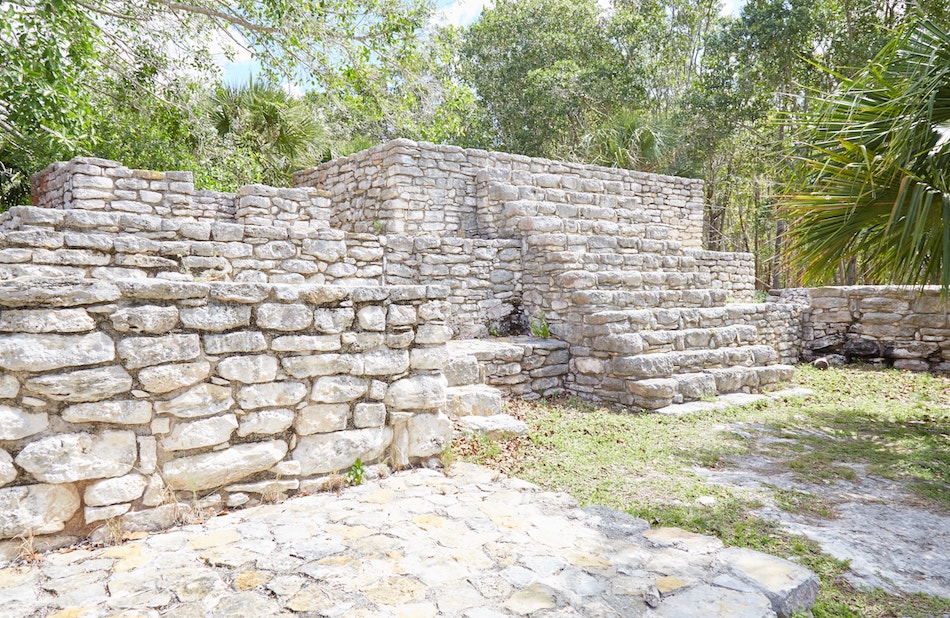
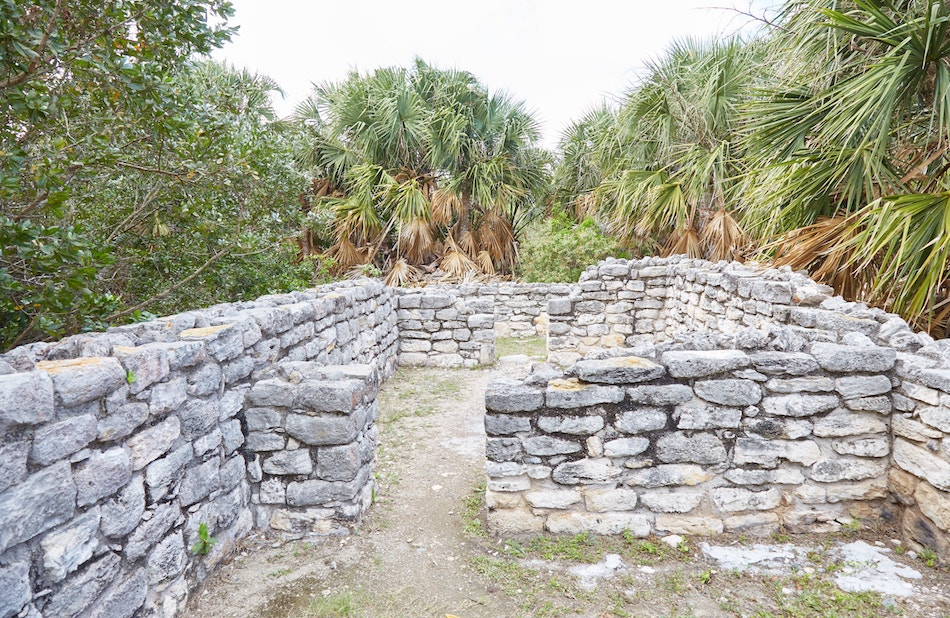
You’re also free to climb the other pyramids on the opposite side, though you’ll quickly run out of things to see. While there’s said to be another area and additional plaza, they were off-limits at the time of my visit.
All in all, Xcambó was one of the smallest archaeological sites I’ve visited in all of Mexico.
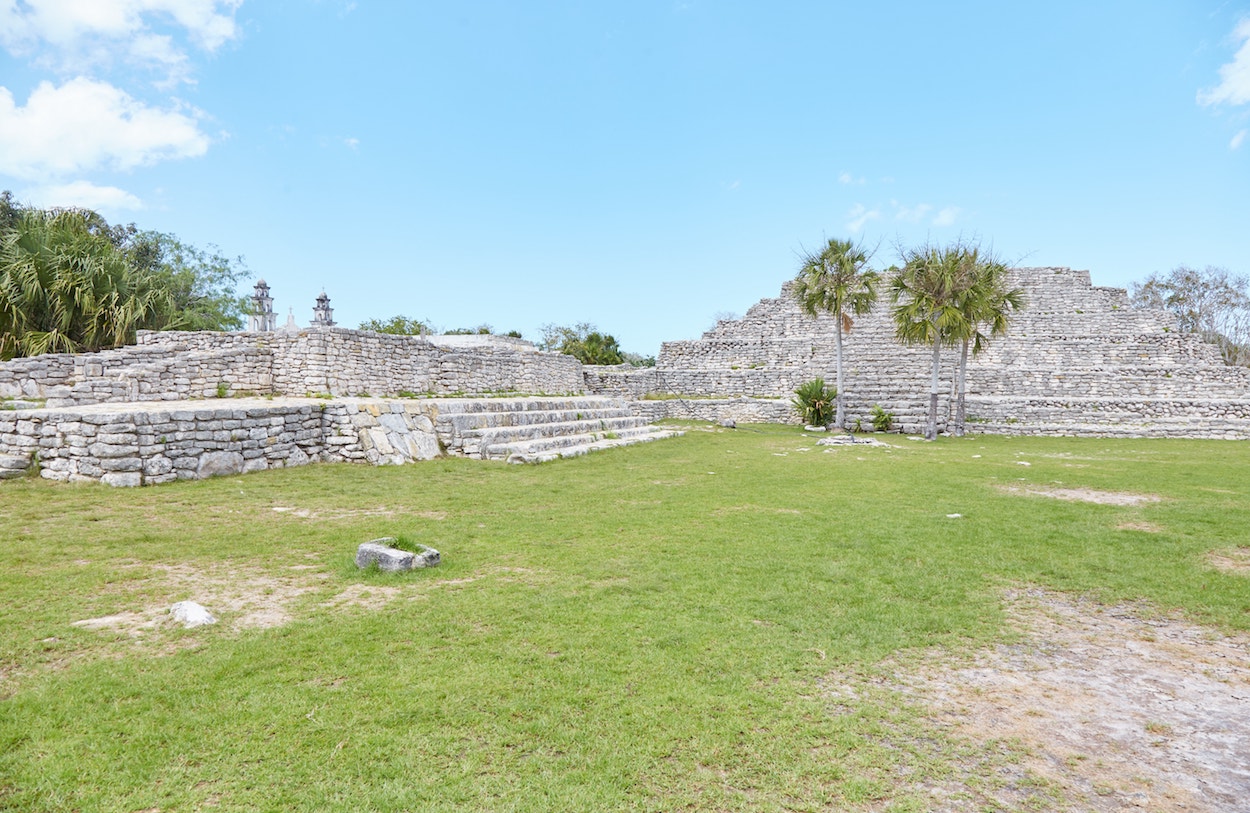
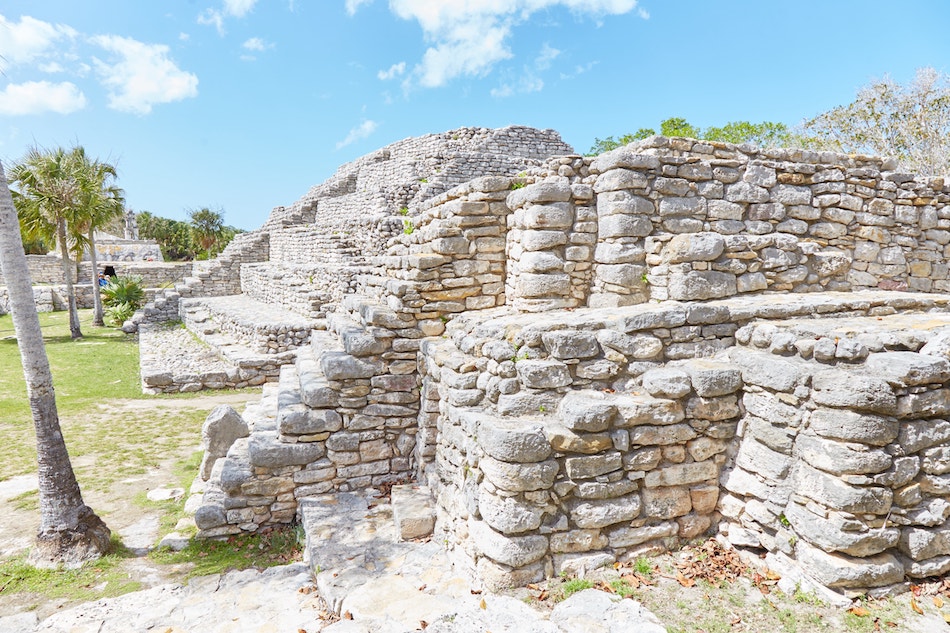

Numerous Mayan sites in Yucatán state had been closed during my trip due to the pandemic. And before this day trip to Progreso, I’d visited all the others that were open besides this one.
I’d previously looked into visiting Xcambó directly from Mérida, but it seemed like too much of a hassle given the lack of public transport.
While I am indeed happy I got to see it on this day tour, frankly speaking, it’s definitely not a site that’s worth going far out of your way for. And this is coming from a dedicated ruins enthusiast!
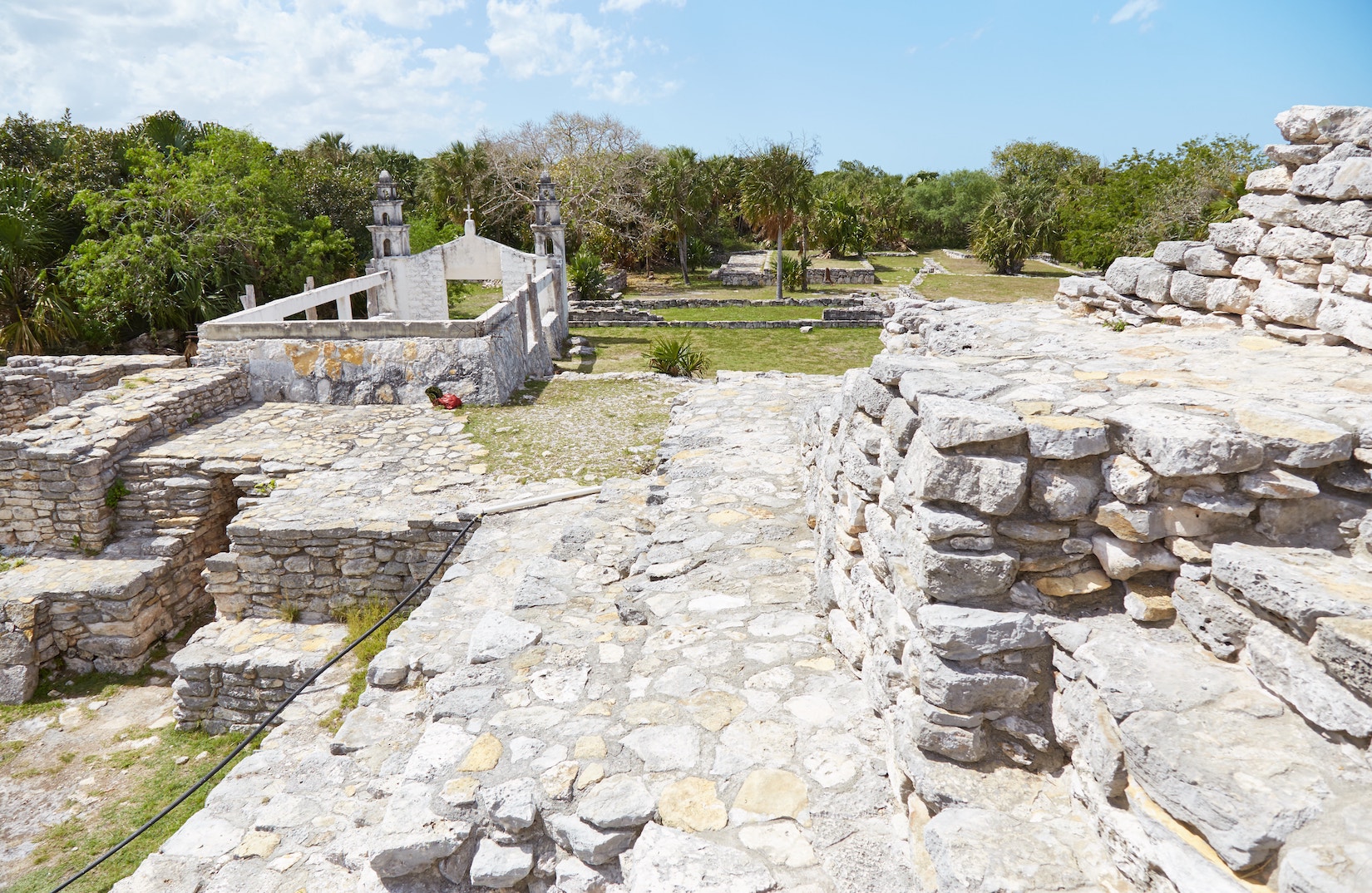
The Flamingos
The last stop of the tour was to see flamingos. But unfortunately, the flamingos were so far away that they looked like mere specks in the distance.
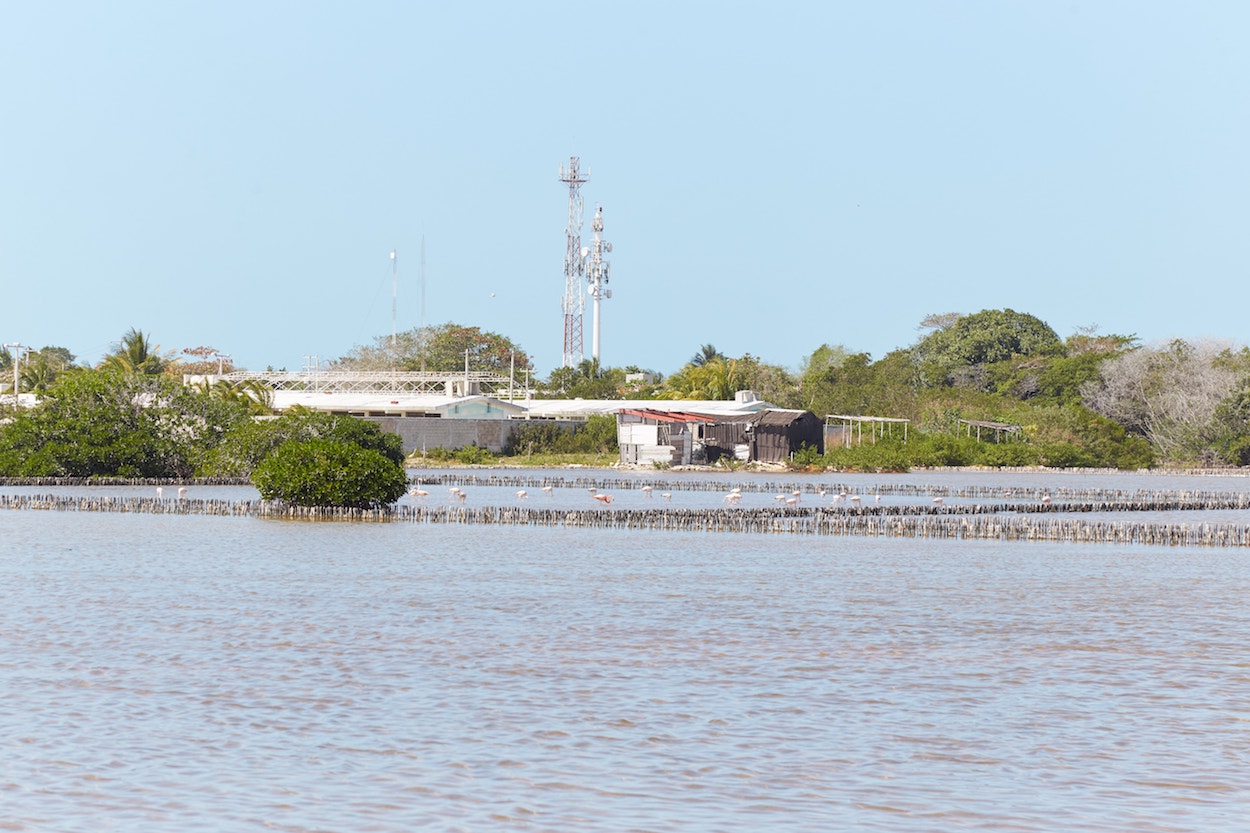
To my driver’s credit, he took me to a few different stops along the highway in hopes of getting a better view. We ultimately found a spot from which to see them closer up, although we had to peek through some dense bushes.
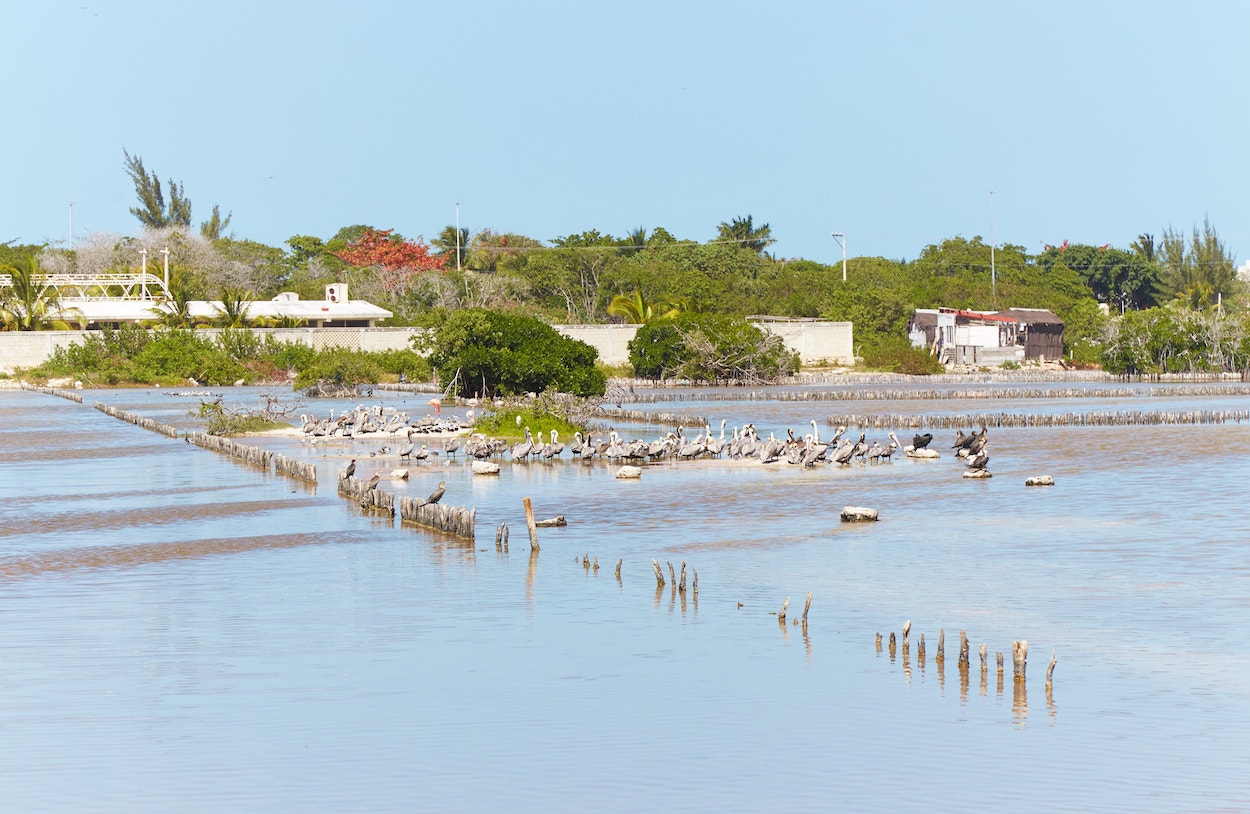
While it made for a nice stop for several minutes, I wouldn’t set your hopes too high for flamingo sightings on this tour. You may have better luck depending on the time of year, however.
I didn’t end up visiting myself, but one of the most popular places for seeing flamingos in the region is Celestún, a coastal town a few hours west of Mérida.
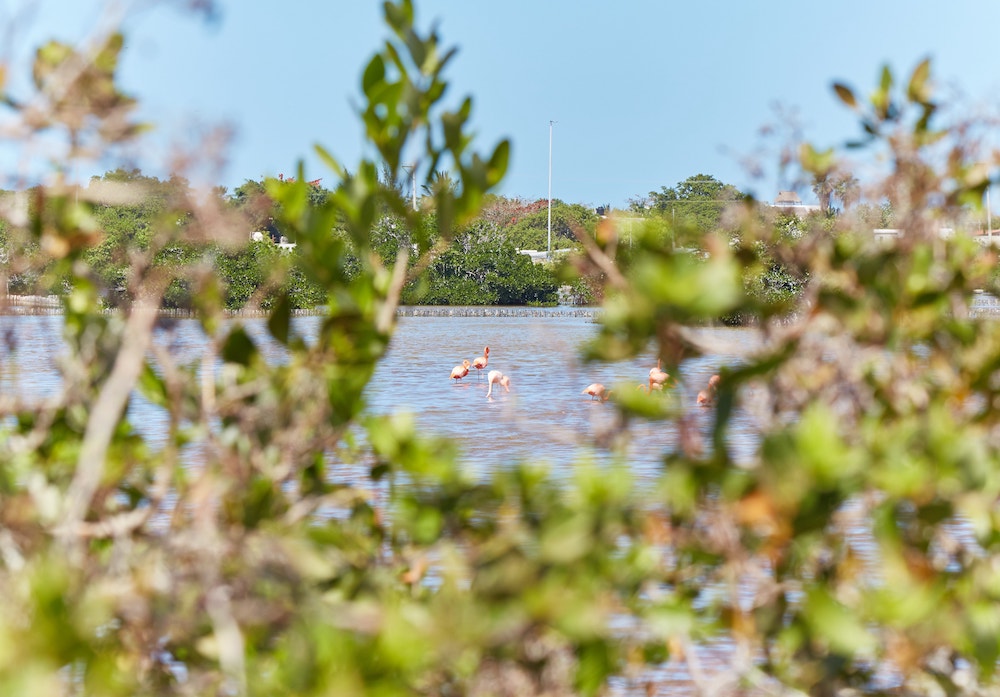
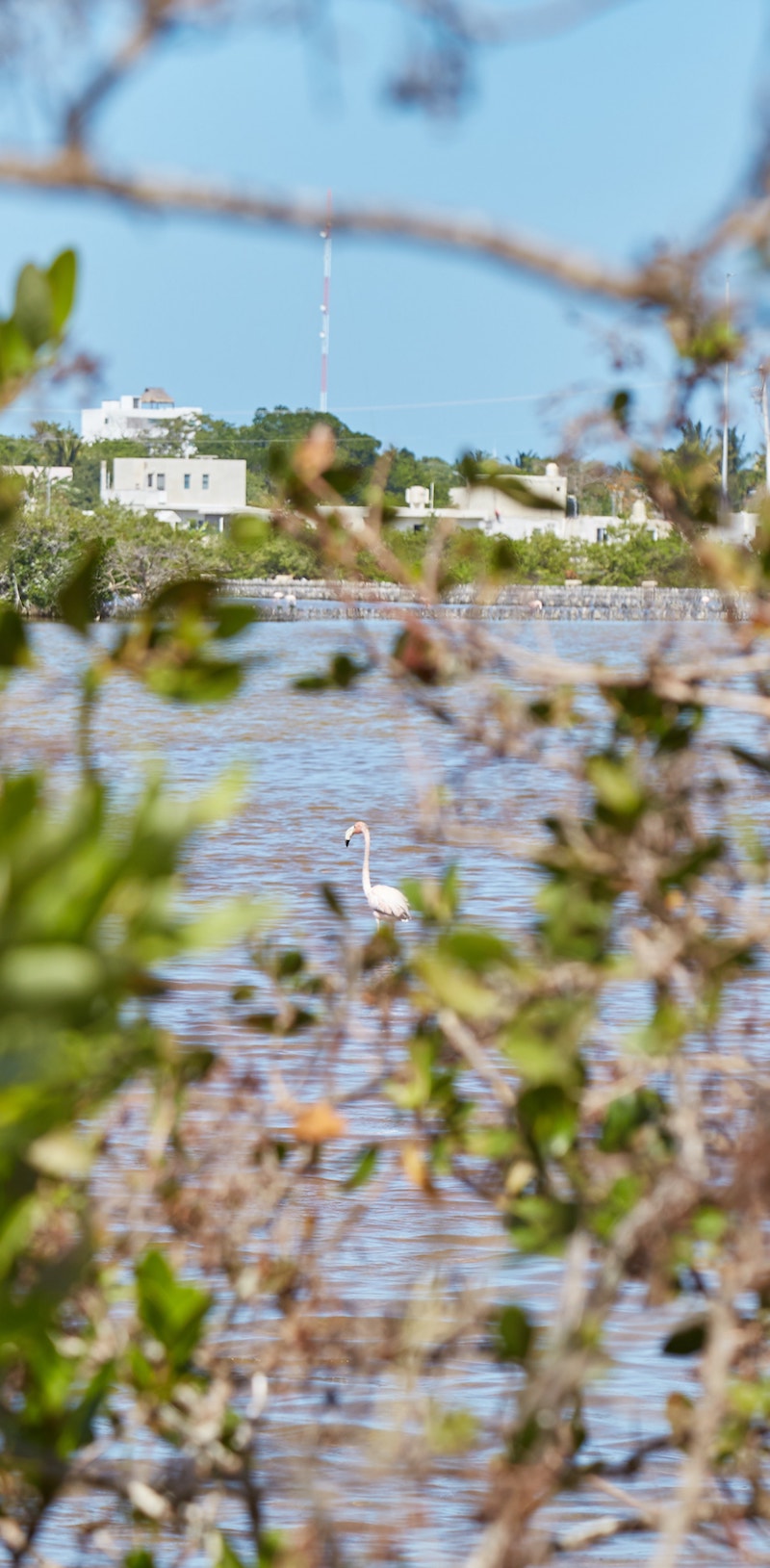
Back at the Beach
Back in town, I grabbed a quick lunch of panuchos, a local Yucatec delicacy, at the market in central Progreso. I then set off to do what I’d originally planned to do in Progreso all along: relax at the beach.
But first, I took a quick a walk around. As you’ll notice, Progreso is home to an incredibly long pier. Stretching out to 6.5 km into the sea, it’s actually the longest pier in the world!
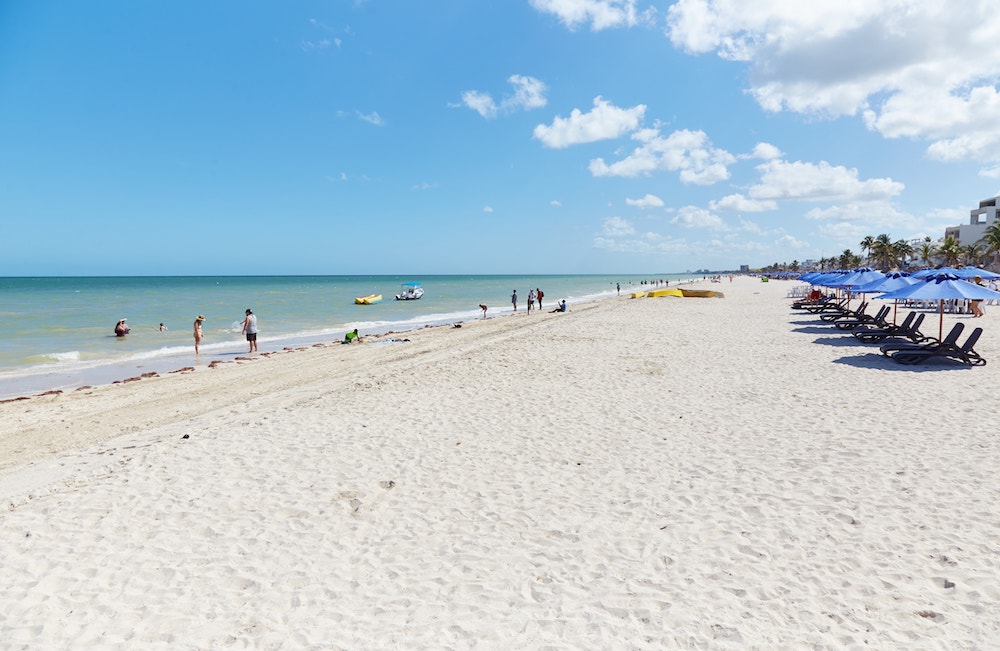
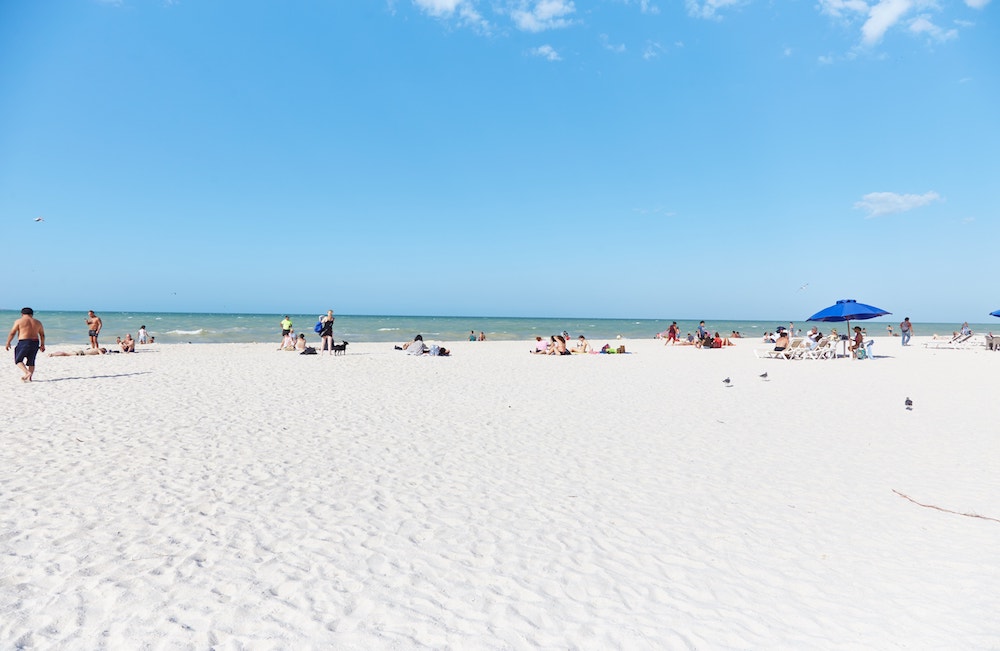
This is due to the shallowness of the water along the coast. As Progreso is also a popular stop for cruise ships, passengers need to hop on a shuttle bus to make it to town.
On that note, I was relieved that Progreso wasn’t particularly overrun with cruise ships at the time of my visit.

While the water here at this Gulf of Mexico beach can’t compare to the stunning turquoise water of the Mayan Riviera, this is nevertheless a beautiful white-sand beach.
And all in all, it’s a lot more peaceful, laid back and more authentic than the crowded and sleazy tourism meccas of Playa del Carmen and Tulum. Don’t miss it during your time in Mérida.
Additional Info
Going on a day trip to Progreso from Mérida is easy and straightforward. You’ll first have to head to the Centro Historico district where you’ll find a small terminal for the Autoprogreso bus company.
Buses for Progreso leave every twenty minutes or so and the ride lasts about an hour. At the time of my visit, a one-way ticket cost just 23 pesos. This is the only company that runs between the two cities.
Returning to Mérida, simply return to the bus station in Progreso and repeat the process in reverse.
The first bus from Mérida departs at 6:00 in the morning, while the last bus from Progreso leaves at 21:30.
As mentioned above, taking a tour to the four destinations is another options.
In Mérida, I highly recommend people stay as central as possible. Some popular mid-range hotels in the center include Casona 61 and Kuka y Naranjo. Those on a tighter budget should also enjoy the highly-rated Hotel Santa Maria and Hotel Real Toledo.
As Mérida is so spread out, things may be much farther apart in reality than they appear on a map. Before making any booking, it’s best to confirm the precise walking distance from your accommodation to the city’s main square, Plaza Grande. From there, you can easily get around to most of the major sites and bus terminals.
Also within the historical center is the main ADO bus terminal that can take you to the ruins. It’s especially important to be close to this terminal if you plan on visiting Uxmal first thing in the morning (see above for more details).
